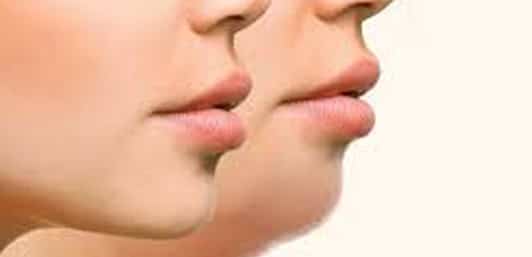Facelift

Facelifts are one of the most popular cosmetic surgeries and have come a long way in recent years. Facelifts improve the appearance of the face by reducing wrinkles and tightening the skin. They target specific areas of the face that have begun to show signs of aging, such as drooping skin, wrinkles, and sagging muscles.

The Best Candidates for Facelifts

Wrinkles around the mouth and nose

Displaced facial fat

Loose tissue in the face
Facelifts have come a long way in recent years, and today’s modern surgical techniques can provide patients with natural-looking results while minimizing scarring, resulting in a more youthful appearance. Facelifts are usually performed under general anesthesia and take around three to four hours to complete.
The procedure involves making incisions in the skin and pulling the skin tight. Swelling and bruising are normal after a facelift and typically reach their peak around two days after the procedure. After that, the swelling and bruising gradually improve within 10 to 14 days.
However, it is important to ensure that you are medically fit for surgery before undergoing the procedure. The surgeon will review your medical history during your consultation to identify potential risks. The team will also assess your skin type and elasticity to ensure that you will get the best possible results from surgery. They’ll look at:

Blood pressure

Blood clotting

Skin problems

Medications

Drug usage

Allergies
Which Facelift Technique Is Best For You?
Today, there are a variety of techniques that can be used to achieve a more youthful appearance. The best type of facelift for you will depend on your individual needs and goals. Here are some different types of facelift techniques:
Mini Facelift

Mini Facelift
One of the most popular types of facelifts is the mini facelift. This procedure is ideal for those who are looking to target specific areas of the face, such as the cheeks or jawline. It involves tightening of the skin and removing any excess fat to improve the appearance. It is less invasive than a full facelift, and recovery time is shorter. However, it can sometimes produce less dramatic results.
Mid Facelift

Mid Facelift
The mid-facelift, as the name implies, is a surgical procedure that specifically focuses on targeting the midsection of the face, particularly the cheeks. This type of facelift can provide a subtle yet noticeable improvement, particularly for patients who don’t have jowls or marionette lines.
SMAS Facelift

SMAS Facelift
This layer, known as the SMAS, is responsible for tightening the skin in the middle of the face. The SMAS facelift is a deep-style procedure that removes excess skin and tightens it with sutures. This will produce a younger look by reversing sagging in the jowls, cheeks, and neck. It has a relatively short recovery time compared to other facelift procedures.
Traditional Facelift

Traditional Facelift
A traditional facelift can help improve the appearance of aging skin. It is ideal for those who want to get rid of aging signs that are quite noticeable. It involves making incisions on the hairline and around the ears and a small incision below the chin. Excess fat is drained from the neck and jowl area, and the skin is removed from in front and behind the ears. It takes about 4-6 weeks for the total recovery, but exercise may help speed healing by 2 weeks. Botox and filler treatments can be used for non-surgical options to reduce wrinkles and add volume to specific areas of the face.
Complications of Facelift
Facelift risks are rare and minor, but they can occur. These risks and others will be fully discussed prior to your consent.

Temporary or permanent hair loss at the incisions

Poor wound healing and skin loss

Skin irregularities and discoloration

Anesthesia risks

Contact
Dr. James Wang Today

If you're interested in learning more about facelifts or any other cosmetic surgery procedure, contact Dr. James Wang today to schedule a consultation. Dr. Wang is a fellowship-trained plastic surgeon with years of experience helping patients achieve their desired results. He will work with you to create a custom treatment plan that meets your needs.
Other Surgical Procedures
FAQs
A mini facelift is a surgical procedure typically done to reduce signs of aging in the lower half of the face. The procedure removes excess skin and tissue and tightens the remaining tissue to create a youthful appearance.
The best facelift procedure is subjective and varies from person to person. Options can range from minimally invasive techniques such as a mini or thread lift to more comprehensive surgical procedures such as a traditional or deep-plane facelift. Ultimately, the best facelift procedure delivers natural-looking results with minimal scarring and quick recovery while addressing your unique concerns.
Facelifts, in general, are a popular cosmetic procedure that can help improve signs of aging, such as sagging skin and wrinkles. Mini facelifts, less invasive than traditional ones, can be especially appealing as they require smaller incisions and shorter recovery times. However, the effectiveness of mini facelifts can vary depending on the individual and their specific aesthetic goals.
Deciding the appropriate age to undergo a facelift is a serious decision. Most plastic surgeons suggest that patients wait until their mid-40s for a facelift, usually when the skin loses its elasticity and wrinkles become more prominent. However, the decision ultimately depends on individual goals and priorities.
Facelift is a popular cosmetic procedure that involves lifting and tightening the skin and underlying tissues of the face to achieve a younger appearance.
A facelift can reduce the appearance of wrinkles, drooping skin, and age spots on the face and neck. The surgery is usually performed with general anesthesia, so you will fall asleep.
The surgeon will make cuts around your ears, then separate the skin from the underlying tissues. He will remove excess fat and tighten the muscles before stitching the skin back in place. Some surgeons also use a laser to tighten skin or dissolve excess fat.
The surgery usually lasts 2-3 hours, and you can go home later that day. You will need to take it easy for a few weeks afterward, but most people can return to their routine within a few weeks.
You can Wear the chin strap for two weeks after a facelift. The chin strap helps to keep the surgical area compressed and helps to ensure optimal healing.



